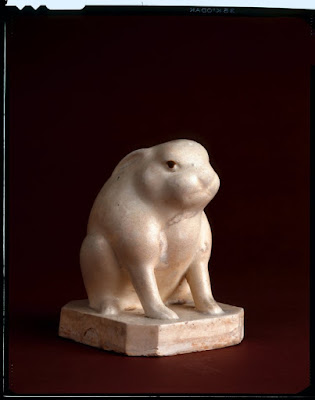 |
| Chinese porcelain Globular jar with four-line poem in cobalt blue Qing Dynasty (18th century) British Museum |
Sir Percival David (1892-1964) acquired these pieces in Beijing during the late 1920s. Responding to the prevailing political chaos, palace eunuchs were actively selling off ancient imperial possessions from the Forbidden City. Sir Percival David was on the spot with the will, the connections, and the cash to exploit the situation. These ceramics – purchased from people who did not own them – first went on display in London in 1931. From 1952 until 2007 they were exhibited in a dedicated building in Bloomsbury under the sponsorship of London University. Since 2009 the exquisite 1700-piece collection has inhabited a specially built gallery of its own at the British Museum.
 |
| Chinese porcelain Bowl with calligraphic poem Ming Dynasty (1567-1572) British Museum |
 |
| Chinese porcelain Cup with lotus-leaf motif Ming Dynasty (1573-1620) British Museum |
 |
| Chinese porcelain Wine-cup with fishing-net motif Ming Dynasty (1600-1630) British Museum |
 |
| Chinese porcelain Incense-burner Ming Dynasty (1627) British Museum |
 |
| Chinese porcelain Hare Tang Dynasty (700-960) British Museum |
 |
| Chinese porcelain Ink-stone Ming Dynasty (1580) British Museum |
 |
| Chinese porcelain Bowl with monochrome blue glaze and white-slip decoration Ming Dynasty (1573-1620) British Museum |
 |
| Chinese porcelain Water-pot in beehive-shape Qing Dynasty (1662-1722) British Museum |
 |
| Chinese porcelain Jar with yellow enamel Ming Dynasty (1522-1566) British Museum |
 |
| Chinese porcelain Gourd-vase with green enamel Ming Dynasty (16th century) British Museum |
 |
| Chinese porcelain Wine-jar with turquoise glaze Ming Dynasty (17th century) British Museum |
 |
| Chinese stoneware Flask with two confronted fish Tang Dynasty (9th century) British Museum |
 |
| Chinese porcelain Water-pot in elephant-shape Ming Dynasty (17th century) British Museum |